I awoke at 4:30 to check the weather in the Ko'olaus and even in the darkness I could see that it was going to be a cloudy day. After some email exchanges with my hiking partner II we decided to scrap our planned outing and find another trail after the sun rose. After considering a host of options we decided on an easy one right next to my house, Pu'u Papa'a that I'd done back in November of 2009.
Pu'u Papa'a is the peak overlooking the Nu'upia fishponds mauka of Mokapu Peninsula. From the rocky peak of Pu'u Papa'a continuing towards the mountains is the ridge known as Mahinui. Some confusion exists over it's name because in 1971 somebody thought it should be renamed Oneawa Hills which may be a tribute to the name of the 'ili 'aina that included the hillside so long ago.
Mahinui Ridge is connected to the often hiked Olomana and it's other two peaks through legend. In ancient times the land from Makapu'u to Kualoa was the home of a giant warrior named Olomana. A warrior from Kauai name Palila challenged Olomana to battle and defeated the giant splitting him in two. One half is as the peak that bears his name and the other half becoming the hill known as Mahinui (Great Champion).
We parked a car on Kaneohe Bay Drive and walked back towards Kailua until we reached the fragrant Aikahi Gardens town homes. I say fragrant because anyone who lives here in Kailua knows that the poo plant is right across the street and it's sweet scent drifts relentlessly across the road. Walking around a chain link fence we reversed course towards Kaneohe again to the end of the town home complex and stepped off the pavement onto an old slightly overgrown road.
The road became a path until we reached the intersection with the service road used to maintain the various antenna on the top of the ridge. We climbed steeply up along a chain link fence though haole koa and dried guinea and molasses grass. I was surprised to see the tattered and decaying condition of the ribbons I'd hung on my first trip up the ridge. They almost looked like they were biodegradable.
At the end of the first climb segment we reached on old cut up utility pole near a newer composite one. The views were already getting good and we'd just started.
Heading east long the ridge we passed some old aviation obstruction lighting to reach a relay station. Not sure who owns it but the sign on the pole next to us warned of high frequency radio fields. Since I already have two kids and don't plan on more I proceeded passed the sign to take some pictures of the field below. I noticed the first shrine of the day, a candle in a circle of rocks with both a fake flower and the remains of real flowers.
We departed the concrete block station to continue east using the ladder to help us make the transition down.
Our path led past three rocks of various sizes and one more weird shrine. Reaching a large rocky outcropping we then contoured to the adjacent ridge that comes up from the Aikahi side. We then headed down that ridge to visit the Battery Commander Station of Battery 405, also known as Battery DeMerrit.
The first clue one would have to the presence of something here is a large flat metal sheet mounted on some scaffolding. I've wondered for years and finally I've determined the purpose of this feature, it's an old microwave relay antenna. However, previously the roof of the Battery Commander's Station held a SCR-296A fire control radar antenna disguised by a wooden facade to look like a water tank that looked similar to this one in Alaska.
 |
| SCR-296A fire control radar antenna at Zeto Point on Adak Island, Alaska. Courtesy of the Kodiak Military History Museum |
Making our way down the ridge we caught sight of the old water tank which had a few kids on it "decorating" it with some spray paint. Rumor has it that when the 8 inch guns of Battery DeMerrit were test fired the concussion cracked the tank and it was abandoned in place.
Past the remains of a dead Keawe tree is the entrance to the Battery Commander's Station (BCS) where the commander directed fire of Demerrit's guns.
The BCS consists of two rooms with steel doors of the same type used in the battery below. The anterior room functioned as the radar operator's room and was designed to be sealed in case of gas attack while the other room had the typical slit style views with steel doors that would both secure the station and provide some protection from incoming fire.
All the equipment is long gone but the picture below gives you and idea of what it may have looked like during World War II. If you've got spare time and bandwidth, this operation manual makes for some interesting reading.
 |
| Interior of SCR-296 Radar operations hut at Ulatka Head, Dutch Harbor, Alaska. Courtesy of the Kodiak Military History Museum |
As we climbed the ridge we past the feeble attempt of what must have been an effort to grow some pakalolo. Kids these days.... ha ha!
We paused to check out some of the views from the top of the emplacements at the summit.
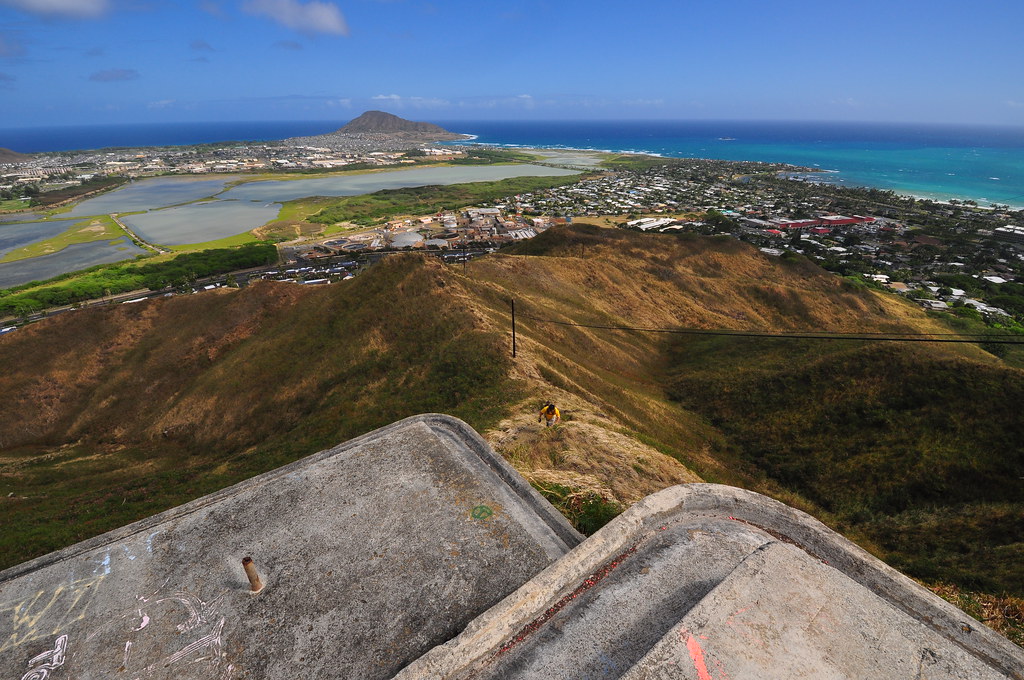 |
| II about to top out. |
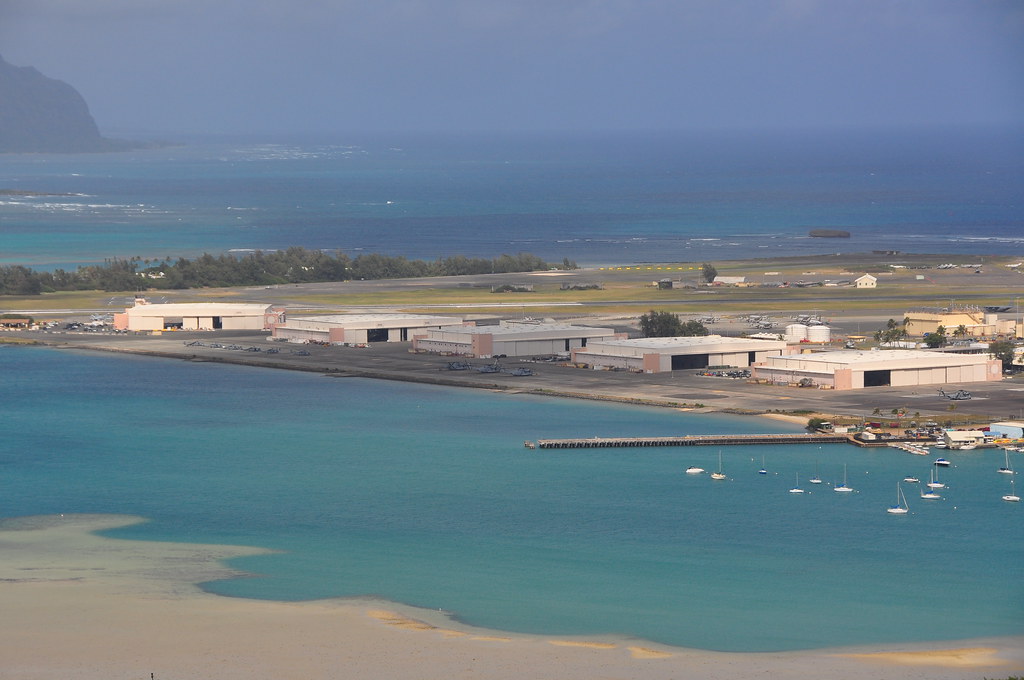 |
| The old seaplane hangars at Kaneohe MCAS. The ramps where PBY's would exit the water and taxi up to the apron are still there. |
 |
| Check out the view! |
One of the cellphone antenna sites had a couple guys working on it so we stayed to the Kailua side of the ridge until we reached a metal staircase that I'd used to get past the last platform on my previous trip. We asked if they minded and the response was "T-Mobile owns this, I can't give you permission". That was open ended considering he didn't say no but we went around their site anyway.
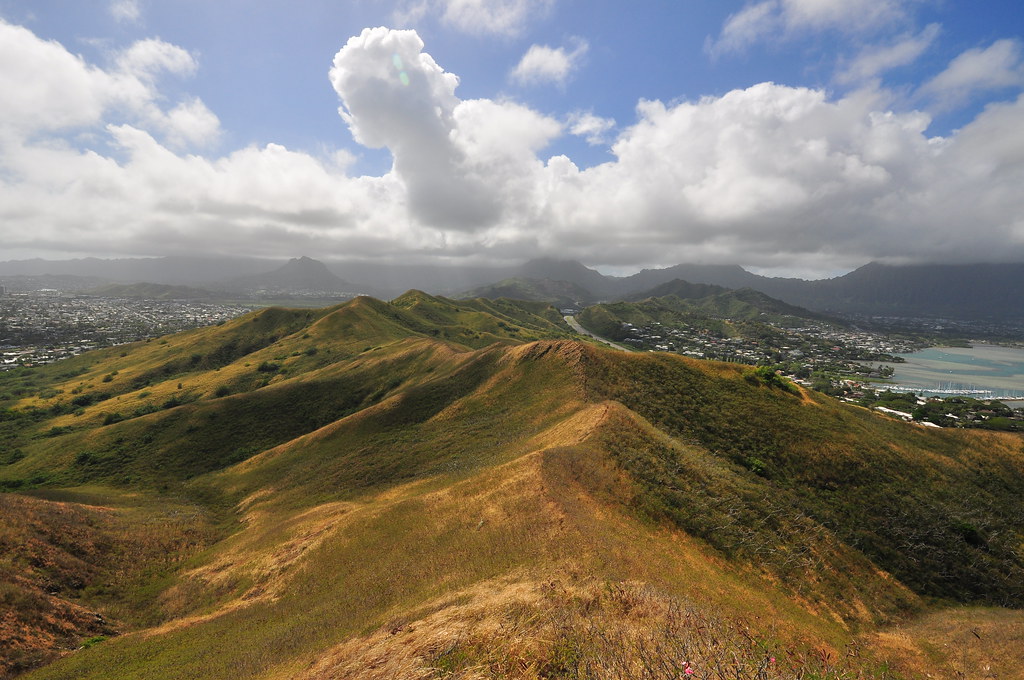 |
| Mahinui Ridge |
Laid out before us was the gently rolling ridge. As I'd promissed II, there is an old trail here that last time had been in various stages of overgrown but this time with drying conditions was far more open.
The first descent was a little slippery with loose rock but nothing to be concerned about. A small climb back up was just enough to get my heart pumping.
On our next small climb we were lucky to see all stages of the Carion's, Stapelia gigantea, reproductive cycle. Most people assume this small succulent is a cactus of some kind but it's not. It likes the arid climate of the low hills of the island and forms small dense populations. The flowers are very beautiful but as do all of it's relatives in the Carion family, they smell of rotting flesh to attract flies and beetles to pollinate it.
Nearby there was another plant with a fruit capsule and another one with a capsule that had opened releasing it's seeds that are designed to carried away by the wind for dispersal.
The views were mostly on the Kailua side because of vegetation obstructing Kane'ohe. I always enjoy the unusual angles of familiar sights when viewed from different perspectives.
The views of Kailua continued to dominated as we continued along the rolling ridge but as we reached the final segment of the trail we were treated to a commanding view of Kawainui Marsh, Olomana, Ulumawao, and H-3 as it snaked through Kapa'a Valley.
 |
| Kapa'a Valley |
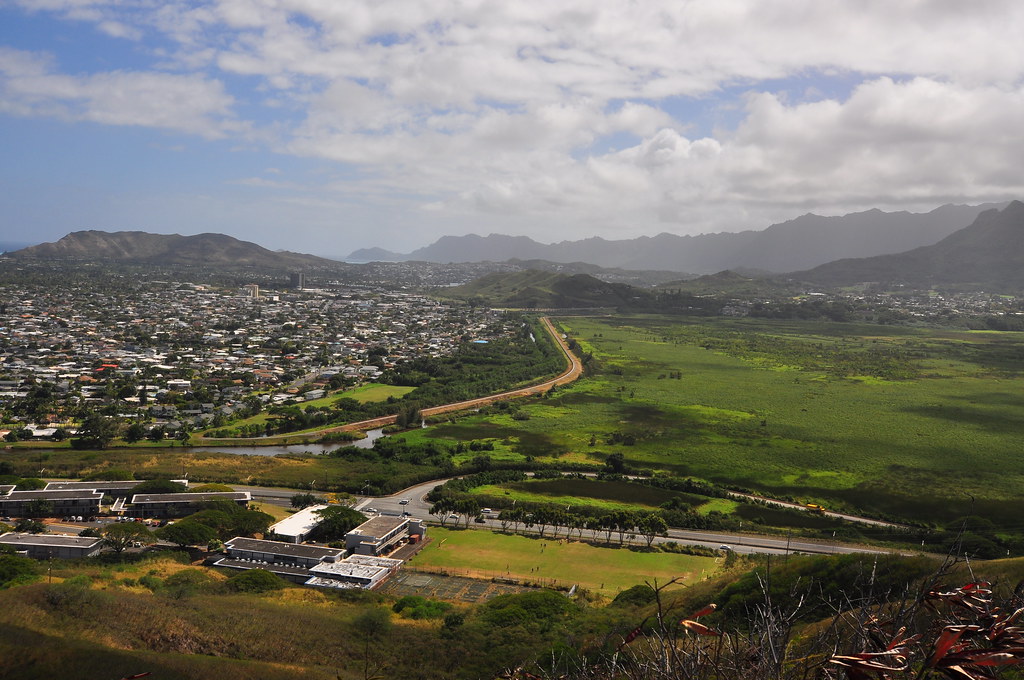 |
| Kawainui Marsh and Kailua Town meet at the Levee |
Another feature clearly visible from the ridge is the levee built in the 1950's to protect the Coconut Grove area of Kailua from flooding. Back when I was young this levee was not much more than a big pile of gravel but after the flooding in 1988 of portions of Kailua the State added a flood wall to the levee which is about four and a half feet high. When I was younger the levee was off limits and rarely did people venture out on to it but now it's a busy place filled with joggers, people pushing strollers, or out walking their dogs. Recently the DLNR has been reviewing the effects of the levee on the health of the marsh.
After passing Kalaheo High School below us we veered east down a small spur ridge to a drainage ditch that empties onto the side of Mokapu Blvd. There's a camouflage netting shelter that's been set up here since at least 2009... purpose unknown.
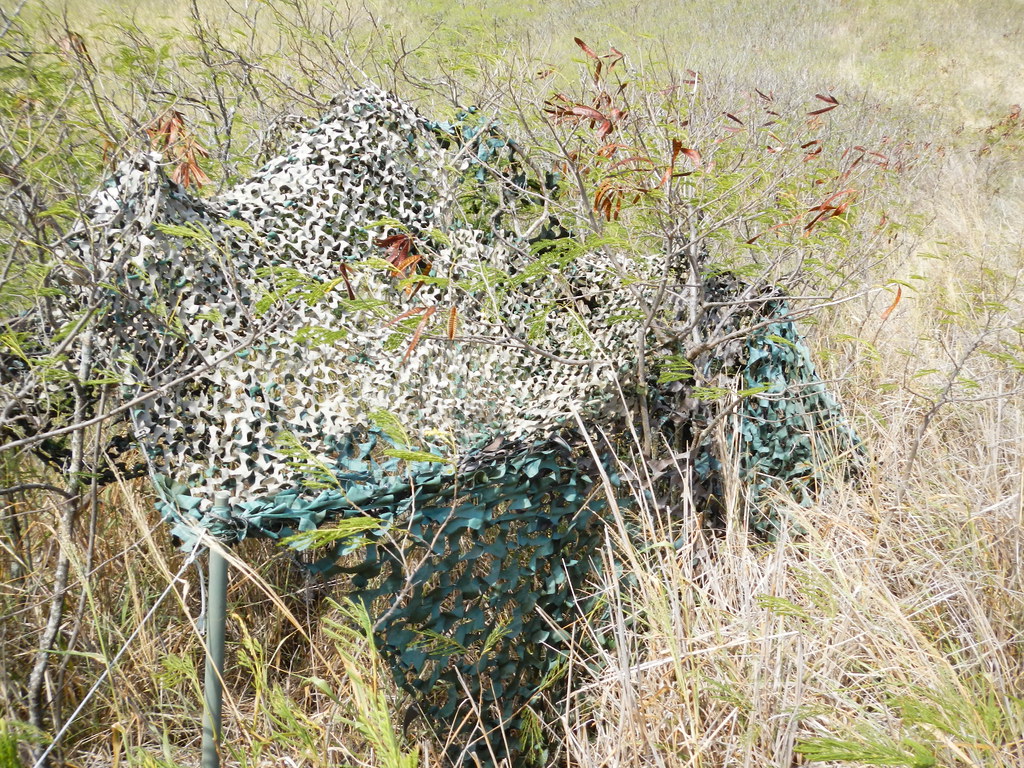
A short stroll later we were back at the Jeep and finished this short trip above Kailua. In fact, I'm sure writing this little adventure up took far longer than doing the trail!
Please be mindful that this is not a public trail! More pictures from this trail and others I've done can be seen on Flickr. Aloha and mahalo for reading!
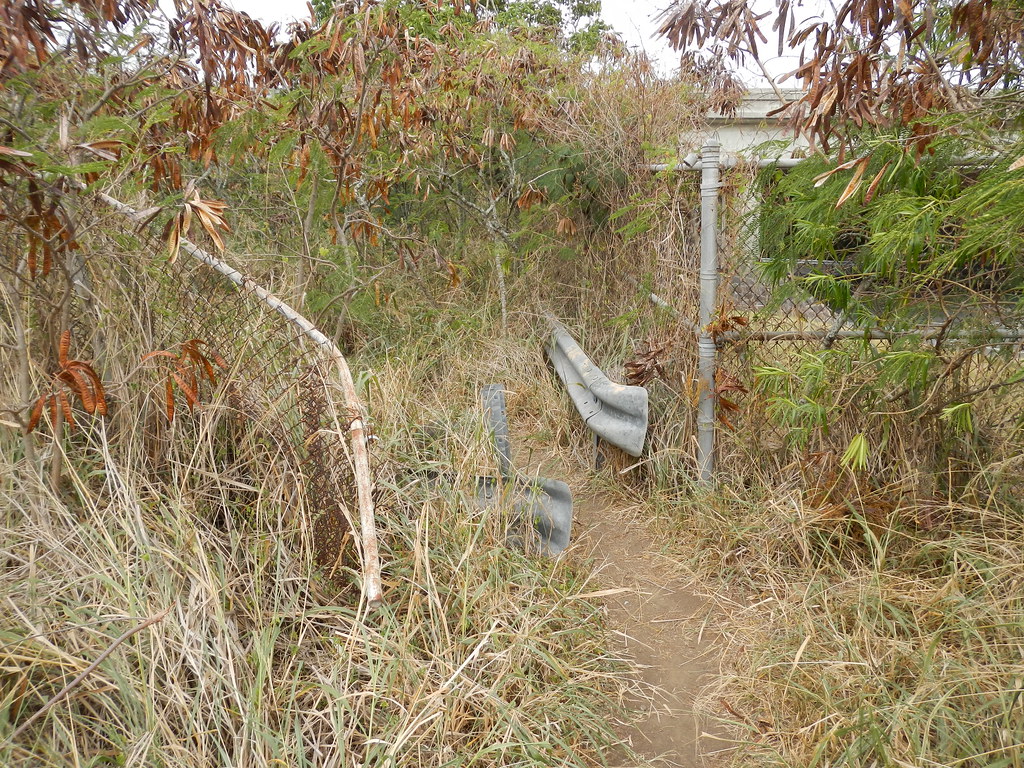
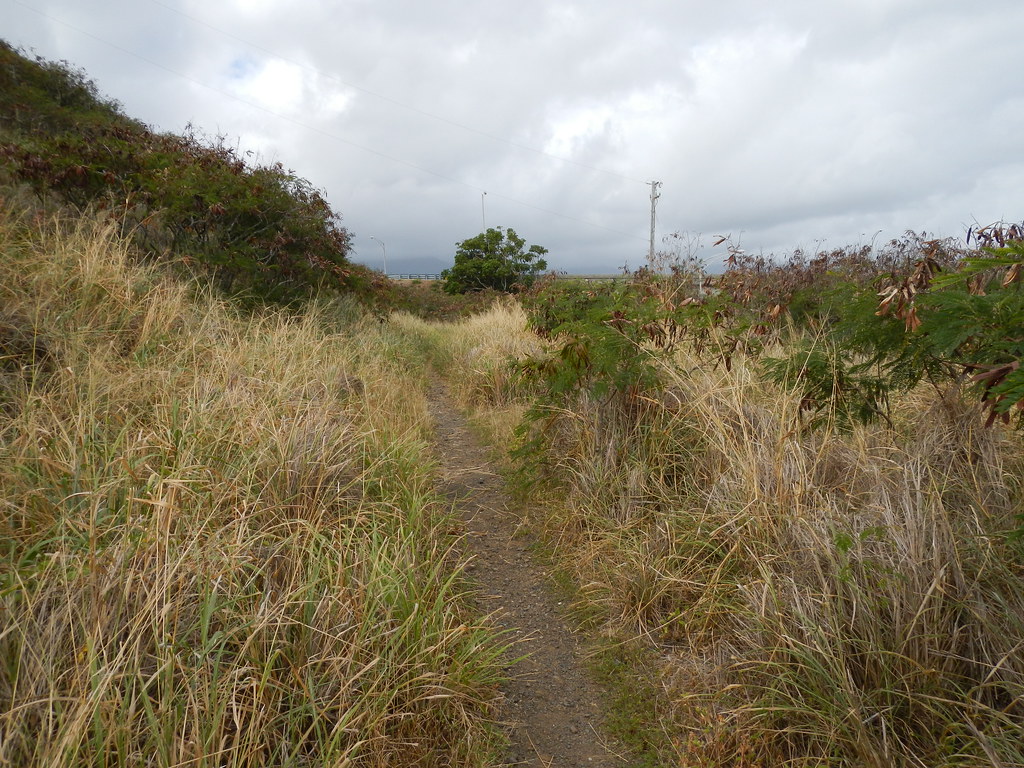
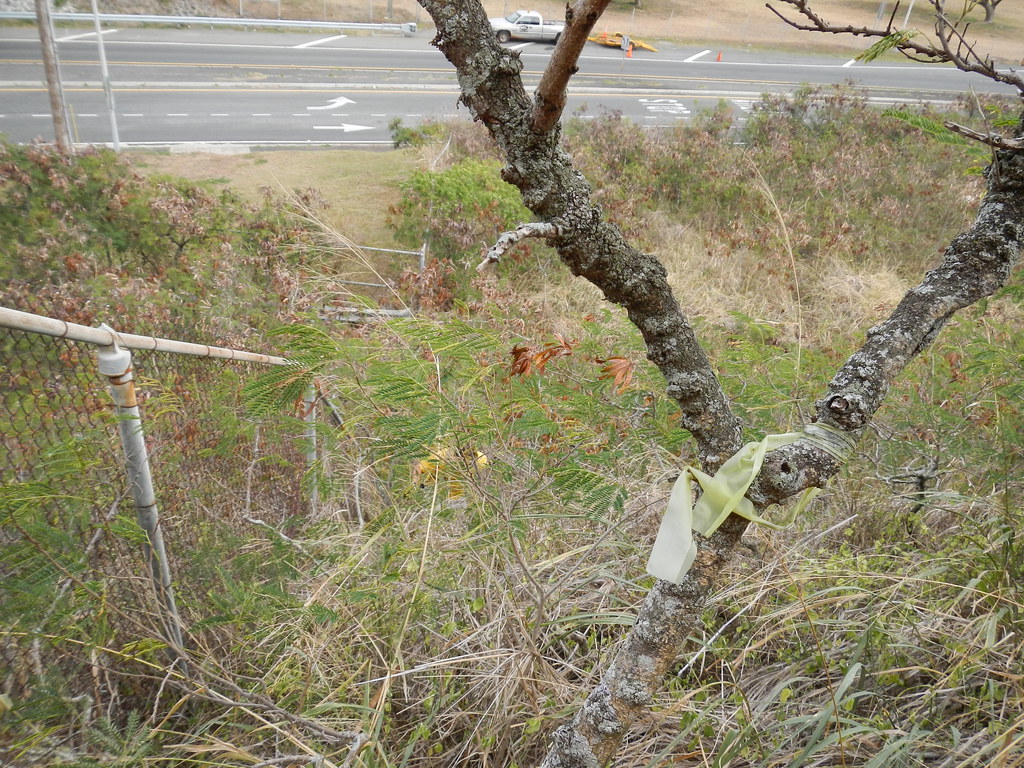

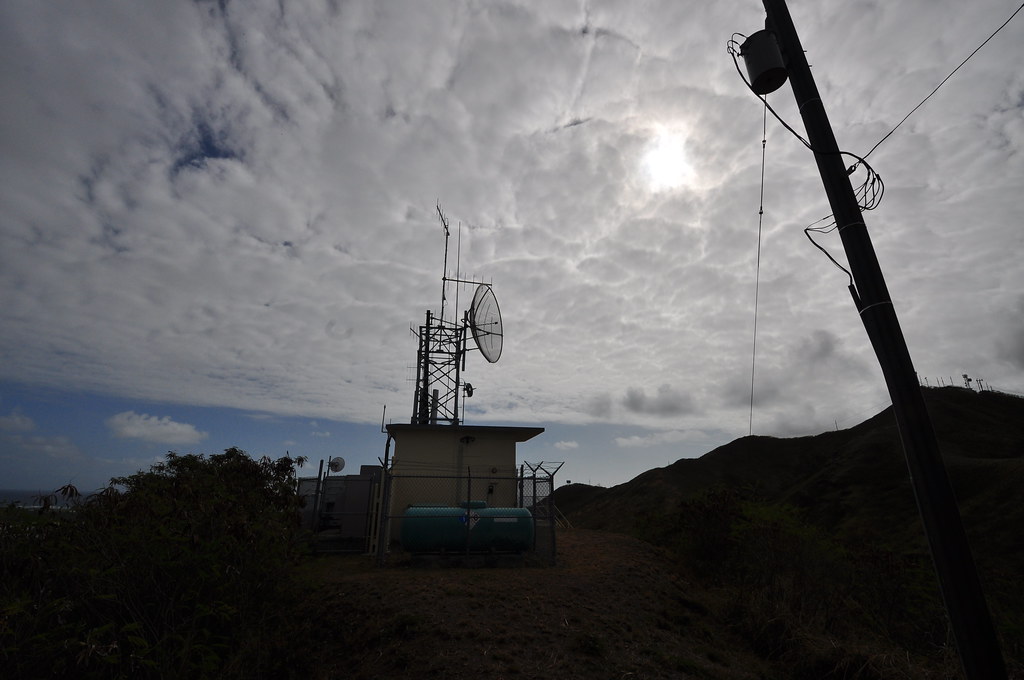



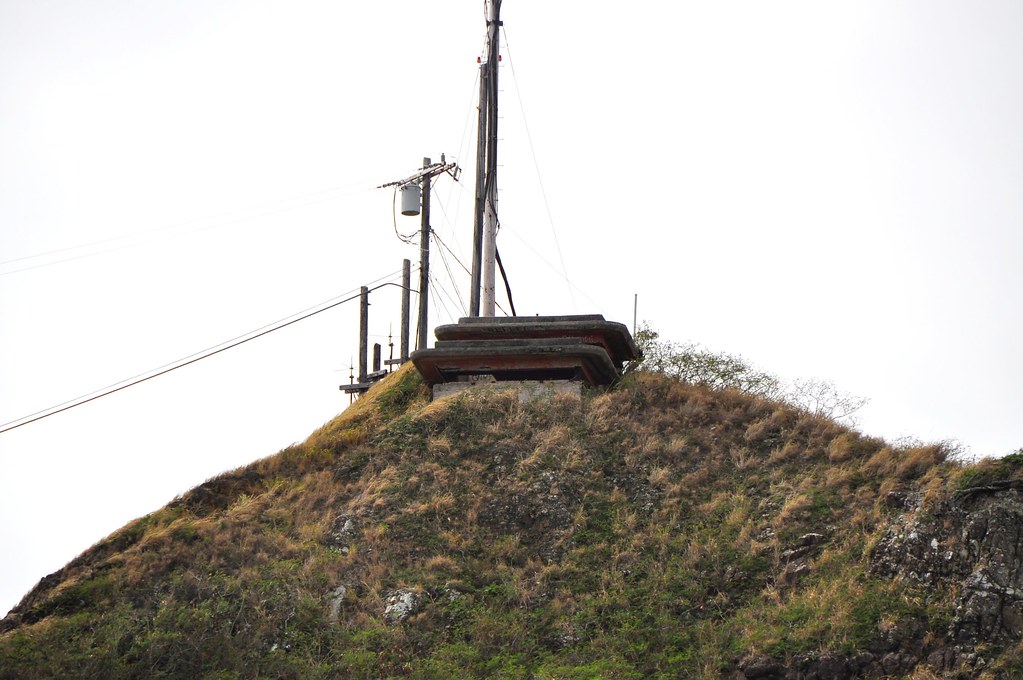
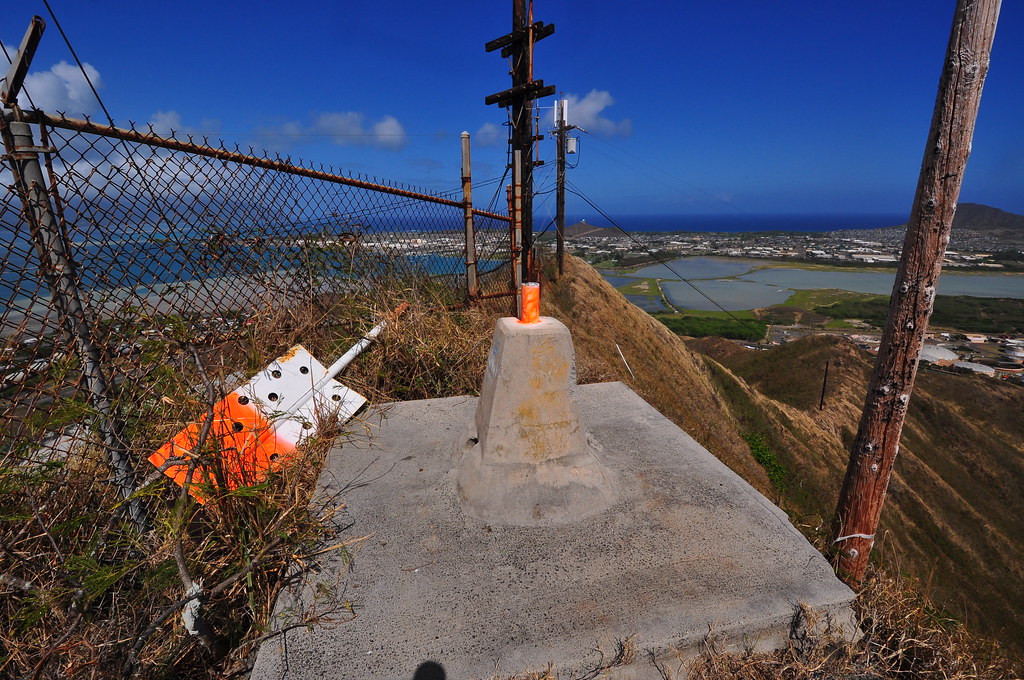
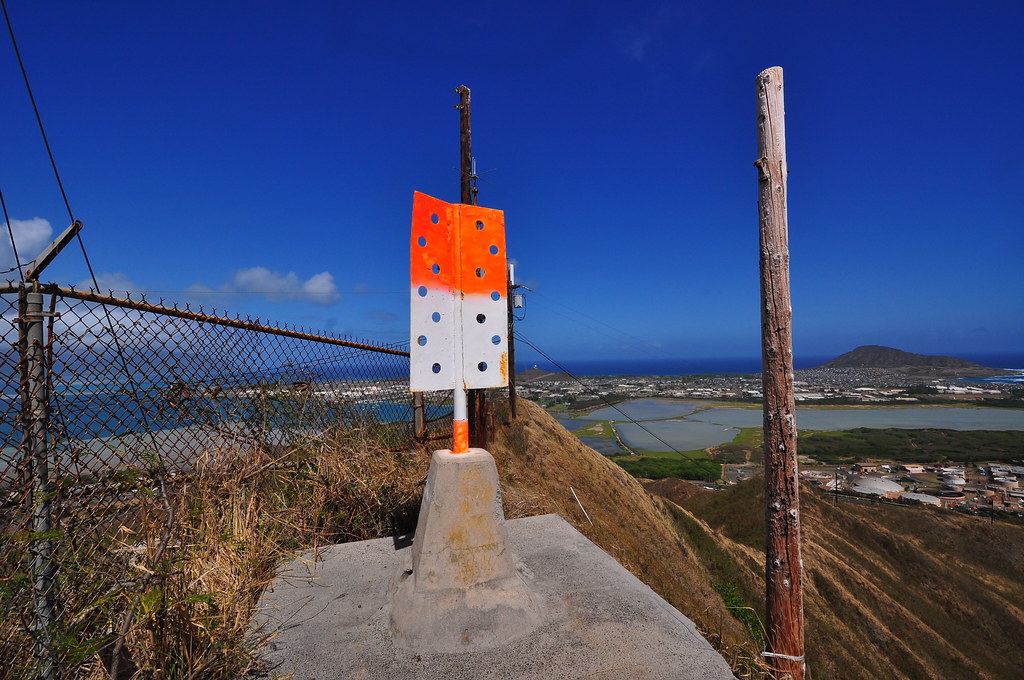

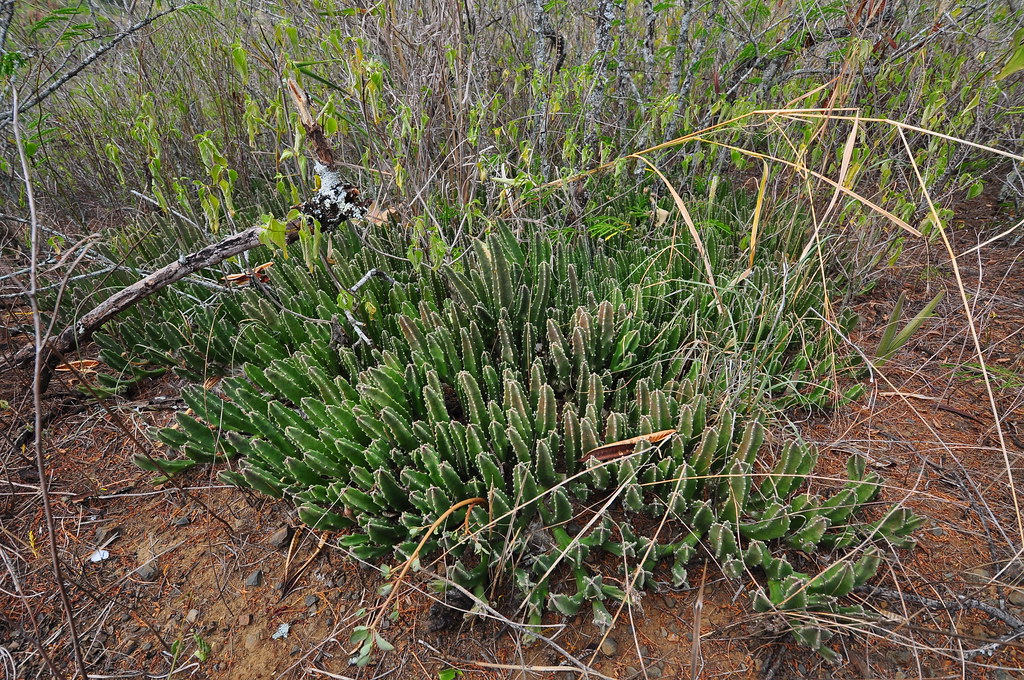
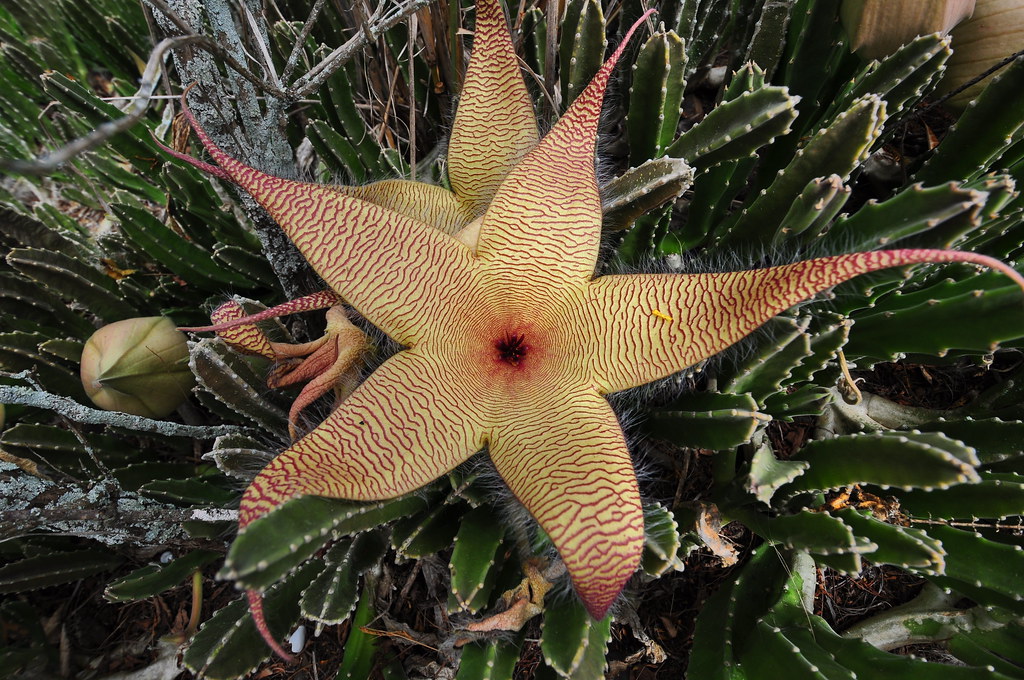

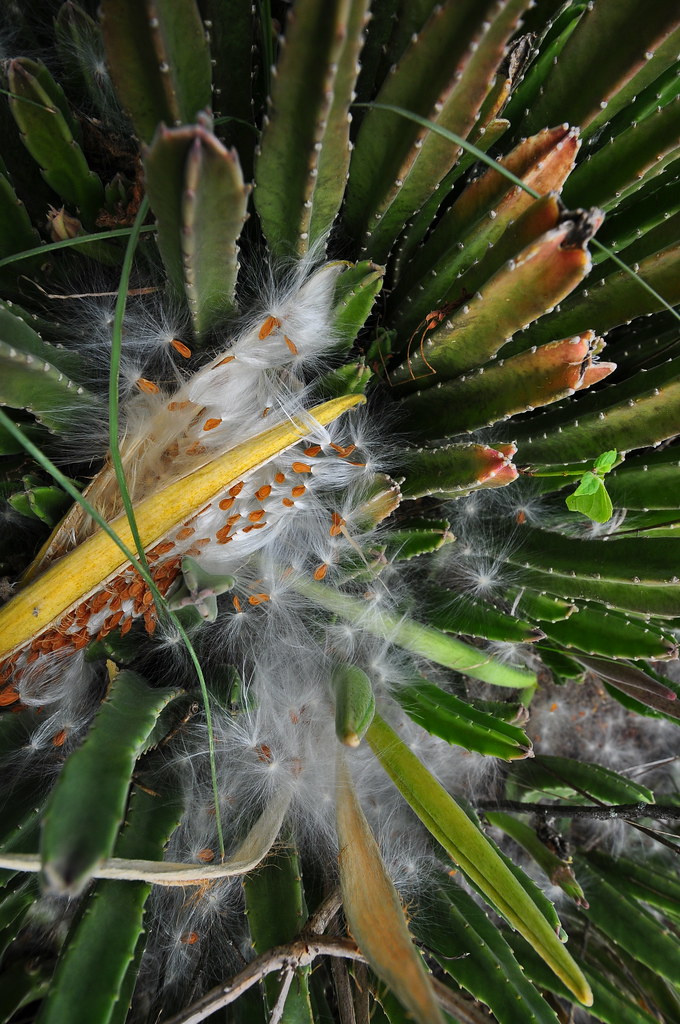


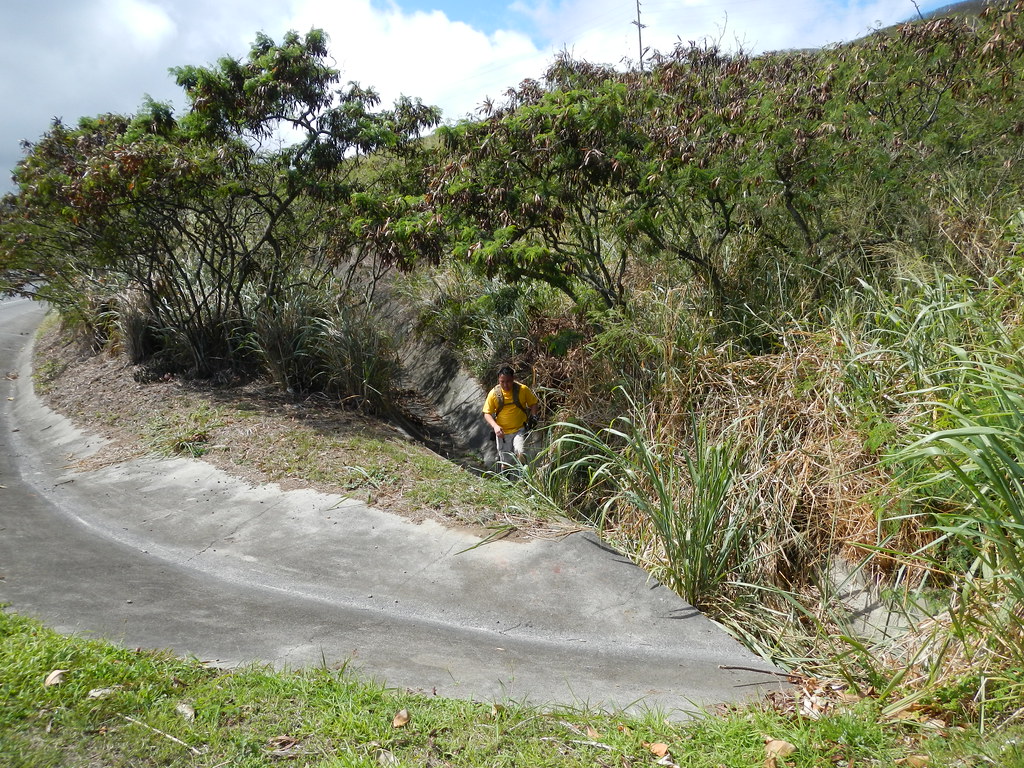
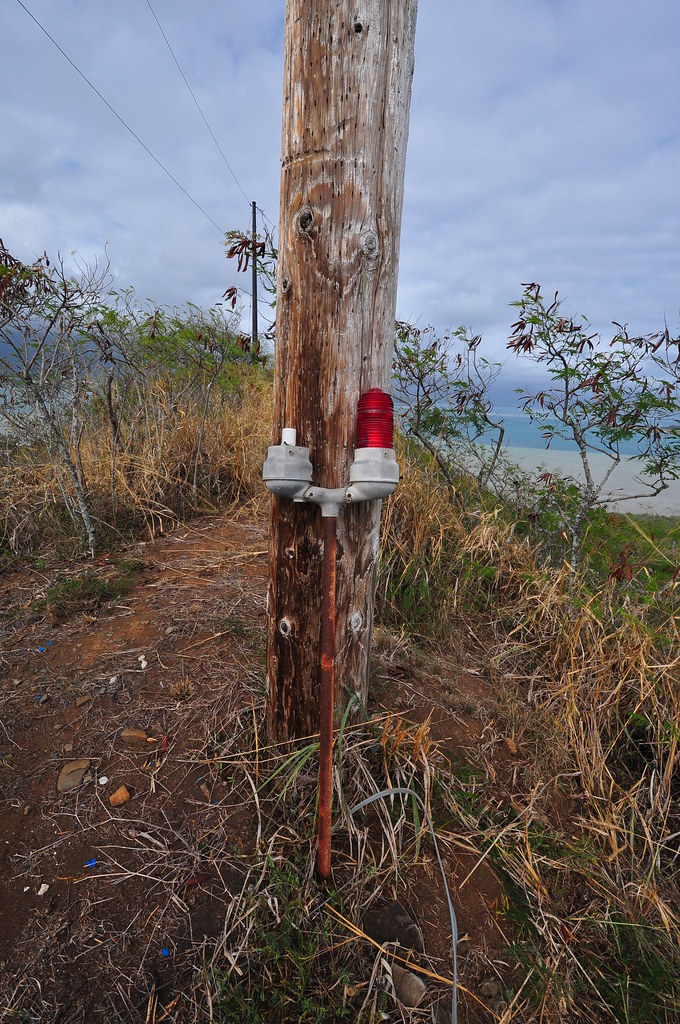


Great pictures! And info
ReplyDelete